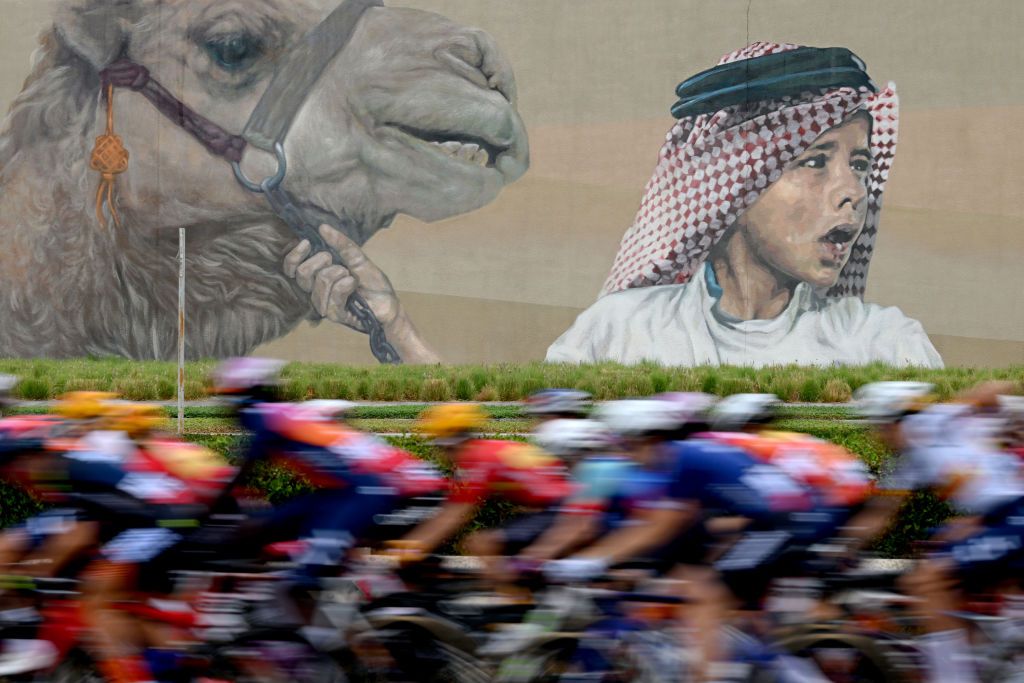Women’s cycling is in rapid development and the second edition of the UAE Tour Women, run by Giro d’Italia organisers RCS Sport on behalf of the Abu Dhabi Sports Council, is clear proof of that.
Billed as “the one and only UCI Women’s WorldTour race in the Middle East”, the UAE Tour is a major race, with lots of local staff and Europeans flown in to ensure the women’s and then next week’s men’s race are well organised.
Speaking to Cyclingnews at the stage 3 start in Al Ain, race director Fabrizio D’Amico broke down the numbers.
“We have around 100 to 150 people coming across from Europe for the race organisation, that number includes the TV production company, NEP from the Netherlands. Then we have around 50 local managers plus another 150-200 marshals for the race,” D’Amico reveals.
On top of this comes a large police presence. Each of the seven emirates has its own police force, so the outriders and traffic regulators change from day to day depending on where the stage is held as each local force takes great pride in escorting the race.
On stage 3, the Al Ain branch of the Abu Dhabi Police turned out at the start in their special uniforms, and the Abu Dhabi Police Musical Band played both at the start and atop the Jebel Hafeet.
This amount of people need to transport to get around, with transfers between the race hotels in Abu Dhabi and the stage starts and finishes taking up to two hours each way. And since the race is held away from Europe, teams don’t bring over their own vehicles.
“For each team, we have one team car plus two vans, one nine-seater plus a one-panel van to transport the equipment. The race organisation has around 70 vehicles inside the race convoy, plus another 50, 55 around the race,” explains D’Amico.
This totals up to almost 200 vehicles, from motorbikes to vans, making the vehicle sponsorship a crucial piece of the puzzle.
The special circumstances also create an almost-level playing field as each team, from the biggest women’s WorldTour outfits to the smallest continental teams have the same number and type of vehicles.
There are still differences, though – while the WorldTour teams brought two complete bikes for each rider, some of the smaller teams only came with one spare bike to share and a number of spare wheels.
The race venues
The…
Click Here to Read the Full Original Article at CyclingNews RSS Feed…

